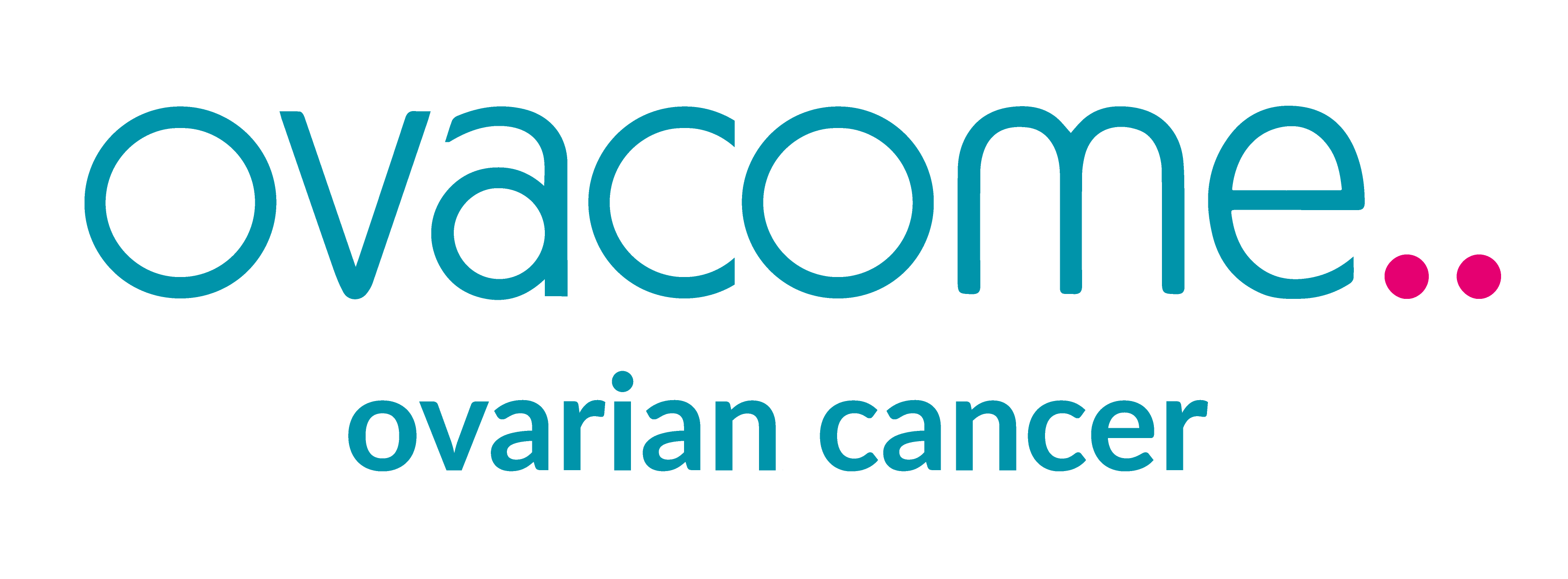Tests for ovarian cancer
It can be difficult to diagnose ovarian cancer because its symptoms can be very similar to other more common and less serious conditions.
People can experience vague and varied symptoms but the most recognised are:
- persistent abdominal bloating
- persistent abdominal or pelvic pain
- feeling full quickly when eating
- changes in urination and bowel habits
If you experience these symptoms you should visit your GP and be offered tests for ovarian cancer.
You can read more about the symptoms here.

Speak to our support line.
Do you have questions about ovarian cancer or your diagnosis?
Our support line is here:
Monday - Friday 10am-5pm.
Call 0800 008 7054 or email support@ovacome.org.uk
Physical examination
You may be given a physical examination. If your doctor finds that you have ascites, which is fluid in your abdomen causing bloating and swelling, or detects a lump in your abdomen or pelvis, you should be referred urgently to your local gynaecological oncology centre. This appointment should be within two weeks.
CA125 blood test
You should be offered a blood test to measure the level of CA125. This is a protein that acts as a cancer marker. The results will usually be back in about a week. The normal level is below 35. If the level is 35 or above it could indicate ovarian cancer – but it could also indicate much less serious conditions too, so further tests are needed. You should then be sent for an ultrasound scan.
If the CA125 level is found to be in the normal range of less than 35, and you continue to have symptoms that could indicate ovarian cancer, you should be reassessed by your GP after a month.
It is important that the CA125 cancer marker test is offered to those over 50 with symptoms that could suggest irritable bowel syndrome (IBS). This condition arises very rarely for the first time in older people and sometimes IBS is misdiagnosed in those who actually have ovarian cancer.
Ultrasound scans
Those with symptoms of possible ovarian cancer, and raised levels of CA125 should be sent for an ultrasound scan. This should be an urgent referral and will probably be to your nearest hospital.
Ultrasound scanning works by using high frequency sound waves to create a picture of internal organs. You will be asked to lie down and gel will be applied to your abdomen and pelvis. A small transducer (microphone) is then moved smoothly over the skin and images of internal organs appear on a screen.
Often a trans-vaginal scan will be needed to get a clearer image of your ovaries. This means a very small transducer is placed in your vagina, which may be uncomfortable but not painful. If you do not want to have an internal ultrasound, let the doctor know. You do not have to give a reason.
You may be given the result of your scan straight away, or a report will be sent to your GP who will discuss it with you. This may take a few days.
If the scan showed possible evidence of ovarian cancer you will be referred immediately to the gynaecological oncology team at your nearest cancer centre for further investigations. If the scan showed no evidence and your ovaries looked normal and healthy your GP should ask you to monitor your symptoms and, if they continue, to return in a month for further assessment.
CT scans
The first appointment with the gynaecological oncology team at the cancer centre will be as an outpatient to be assessed and probably to arrange a CT (computerised tomography, which uses x-rays) scan of your abdomen and pelvis.
On the day of the scan you may be given a contrast medium, which is a harmless dye that shows up the internal organs. This is done through a cannula (a thin tube) in a vein in your arm, which will be removed after the scan. Sometimes the contrast medium can be swallowed as a drink, sometimes both methods are required. Before it is used you should be asked if you have any allergies or asthma, or if you have had previous allergic reactions to contrast medium.
You will need to change into a gown and remove jewellery. You will then be asked to lie on a couch in front of the scanner, which is shaped like a big ring, and stay still while the scanner moves above your abdomen and pelvis.
The CT scan takes a series of detailed x-rays which build up a three dimensional image of the organs inside your body and show any abnormalities which may suggest a diagnosis of ovarian cancer. The scan results will be analysed and the scan images will help the gynaecological oncology team to decide on a diagnosis and recommend a treatment plan. The results will probably be given to you at a meeting with your gynaecological oncology consultant, which will be arranged by the hospital.
Having a laparotomy
If the results of the tests indicate that you could have ovarian cancer, you may be admitted to hospital to have a laparotomy. This is an operation to open the abdomen and look at your organs and the abnormalities that were shown on the CT scan. During the operation the surgeon may take samples of tissue to be analysed in the laboratory, this will be your histopathology results.
Surgery may not be appropriate if you are not well enough or if the CT scan has shown that you have advanced ovarian cancer and it has spread. Your doctors will discuss this with you and plan your treatment.
Test results
After the laparotomy the tissue samples taken at the time of surgery will be sent for testing to confirm your diagnosis. It may take two or three weeks for results to become available. If you are found to have ovarian cancer your clinical team will plan your treatment with you.

Did you find this page helpful?
We welcome your feedback. If you have any comments or suggestions, please email r.grigg@ovacome.org.uk or call 0207 299 6653.
Get support
Ovacome is the UK 's national ovarian cancer support charity. We've been providing emotional support and personalised, expert information since 1996. Contact our support line by phone, email or text if you have questions about a diagnosis, or if you just want to talk things through.
We support anyone affected by ovarian cancer, including family members, carers, those with an inherited risk, and health professionals working in the field.
Ovacome has 50 information booklets on a variety of topics about ovarian cancer.
Visit us at an in-person event
Find connections in your local area, search for an event near to you.
Become part of the Ovacome community
Our members are at the heart of everything we do. There’s no cost to membership. Be the first to hear about Ovacome news and join a friendly, supportive community, all working together to promote knowledge and support others.





